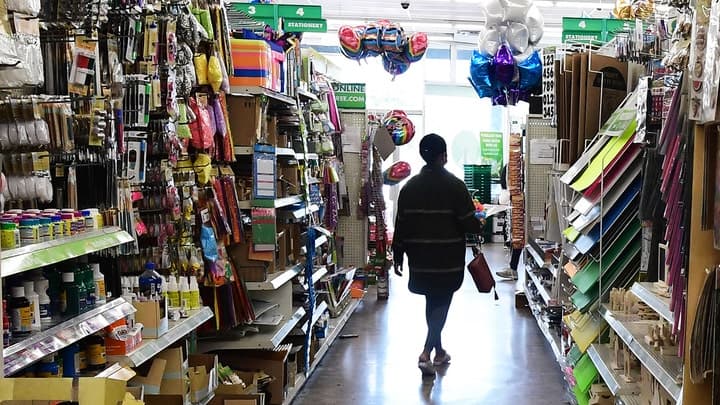Americans’ inflation fears accelerated again in November, climbing for the 13th consecutive month to a new record high, according to a key Federal Reserve Bank of New York survey published Monday.
The median expectation is that the inflation rate will be up 6% one year from now, the highest level for the gauge since its launch in June 2013, according to the New York Federal Reserve’s Survey of Consumer Expectations. Inflation expectations over the next three years fell slightly to a median of 4%, a drop that was precipitated by responses from those without college degrees. It marked the first decline in six months.
“Median inflation uncertainty — or the uncertainty expressed regarding future inflation outcomes — increased at both the short- and medium-term horizons, with both reaching new series highs,” the survey said.
With consumers braced for the highest inflation levels in nearly a decade, they are also expecting the price of things like food, medical care and college tuition to rise over the next year. But Americans said they expect gasoline and medical care to get cheaper over the next year, while they think that rent will remain unchanged.
The report is based on a rotating panel of 1,300 households.
The survey plays a critical role in determining how Fed policymakers respond to the recent inflation spike. That’s because actual inflation depends – at least in part – on what consumers think it will be. It’s a sort of self-fulfilling prophecy – if everyone expects prices to rise by 3% in the year, that signals to businesses that they can increase prices by at least 3%. Workers, in turn, will want a 3% pay raise to offset the rising costs.
“This is about well-anchored inflation expectations,” Fed Vice Chairman Richard Clarida said during a question-and-answer session at the Cleveland Fed two weeks ago. “Getting actual inflation down close to 2% is going to be an important part of keeping those expectations anchored.”
Fed Chairman Jerome Powell has already signaled the U.S. central bank may speed up its withdrawal of pandemic support for the U.S. economy in order to combat inflation, which has been higher and longer-lasting than policymakers initially expected. That could mean the Fed’s bond-buying program ends sooner than expected, potentially leading to a faster-than-expected interest rate hike.
“At this point, the economy is very strong, and inflationary pressures are high,” Powell said two weeks ago while testifying on Capitol Hill. “It is therefore appropriate in my view to consider wrapping up the taper of our asset purchases, which we actually announced at our November meeting, perhaps a few months sooner.”
A Labor Department report last week revealed that the price of consumer goods rose by 6.8% in November from last year, the fastest pace since June 1982 – all but solidifying the Fed’s plans to accelerate its tapering timeline.
“[The] consumer price data, with annual inflation reaching a near 40-year high of 6.8%, greatly increase the pressure on the Federal Reserve to wind down its asset purchase program even more quickly than previously communicated and bring interest rate hikes forward to the first half of 2022,” said Matthew Sherwood, global economist at the Economist Intelligence Unit.

